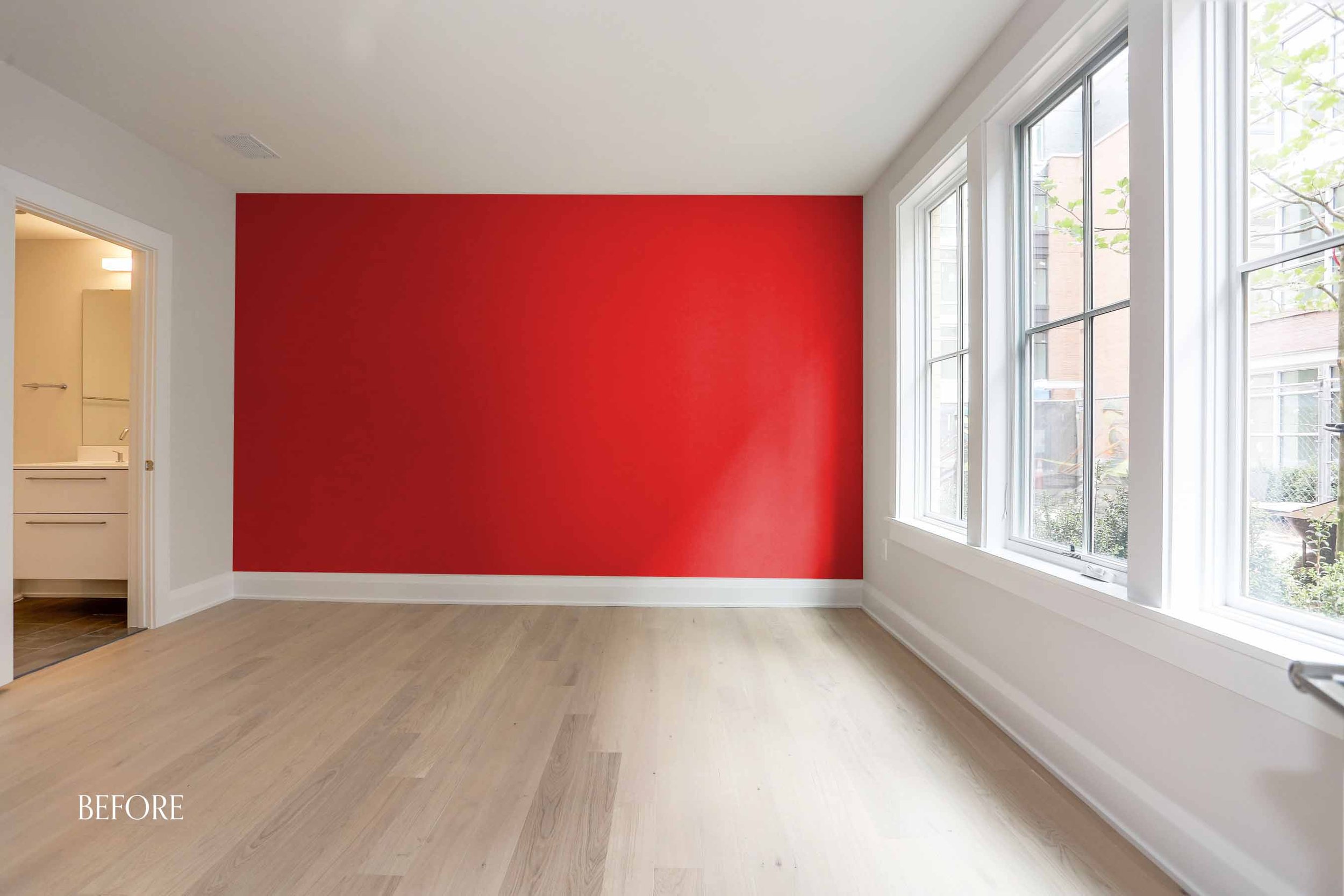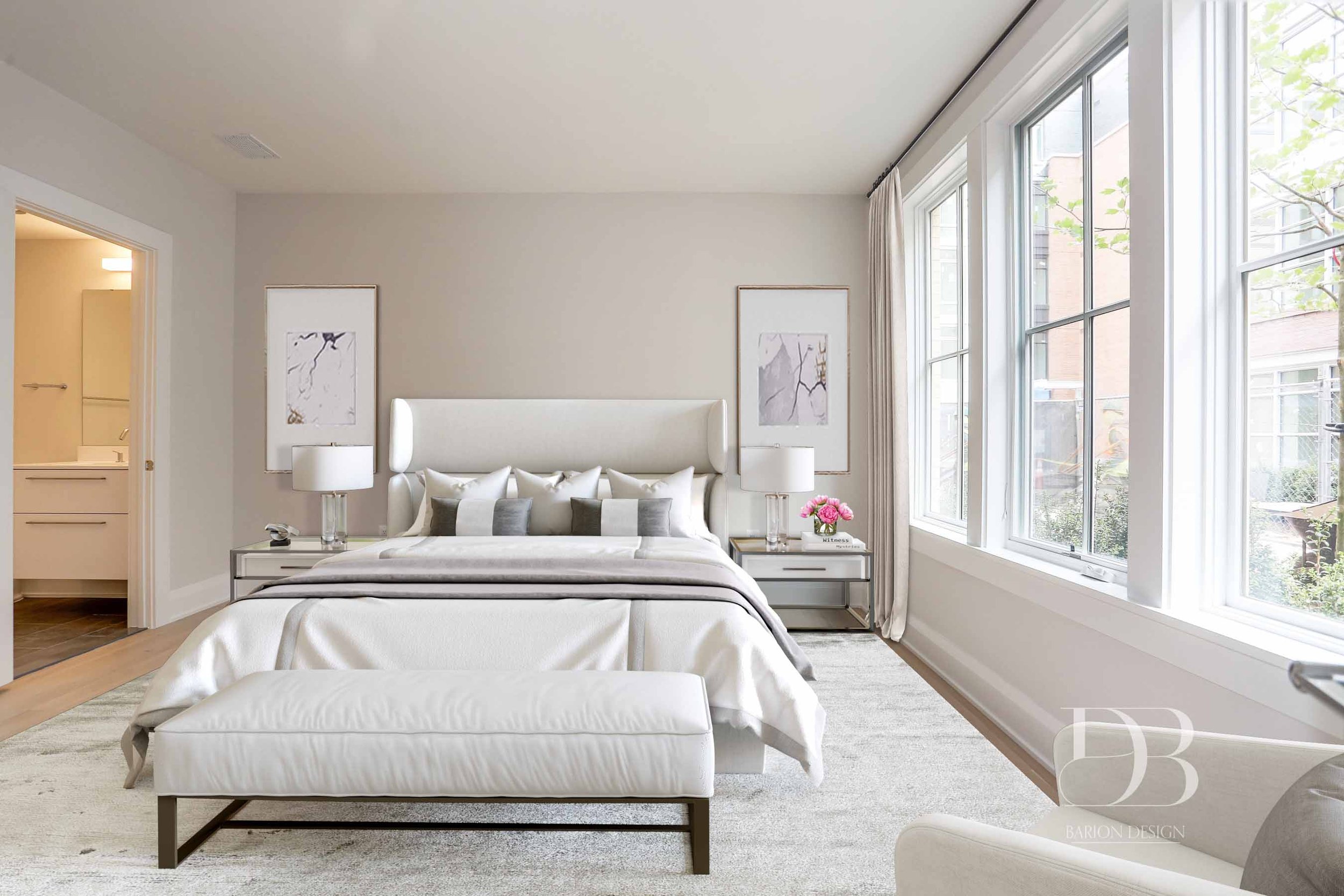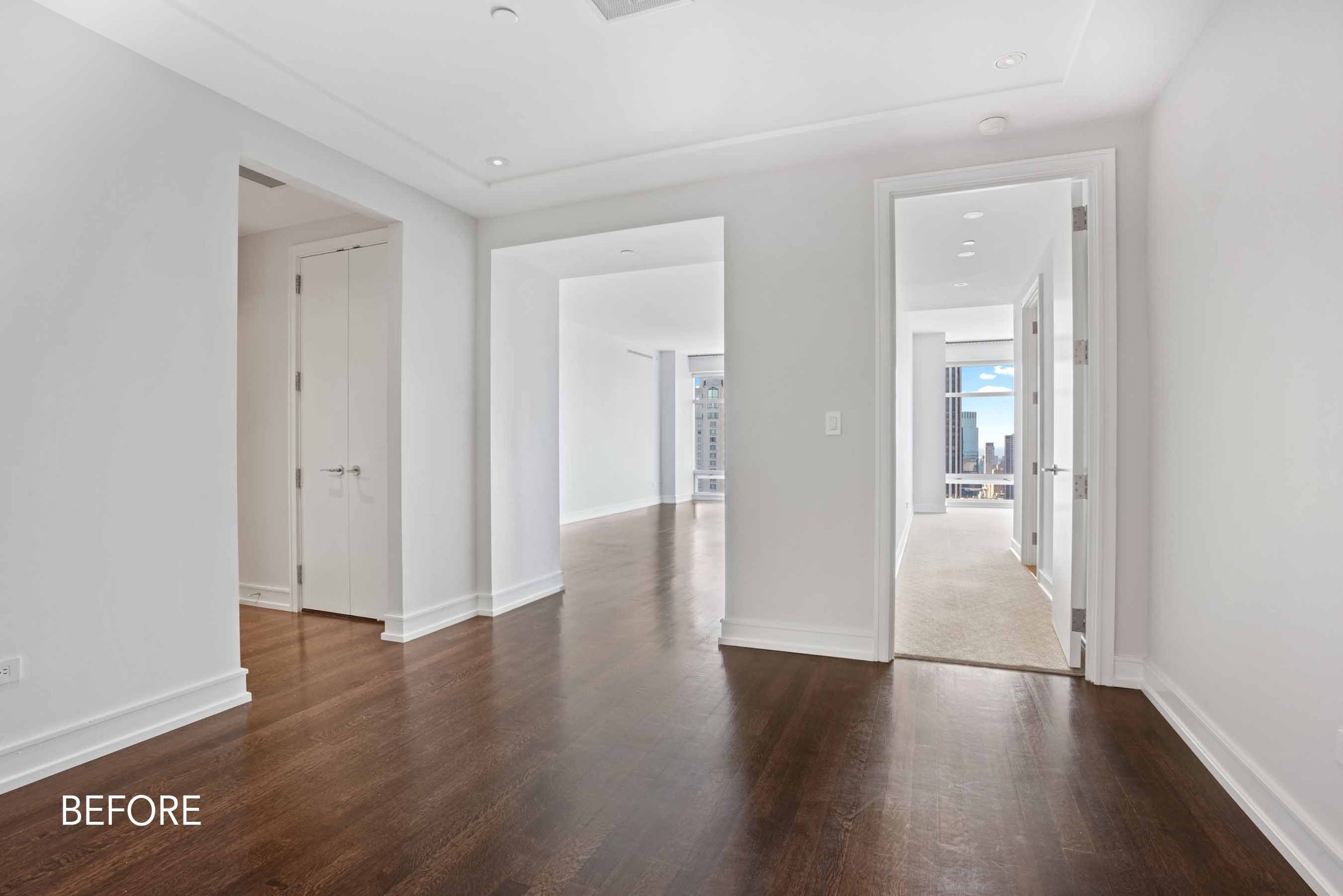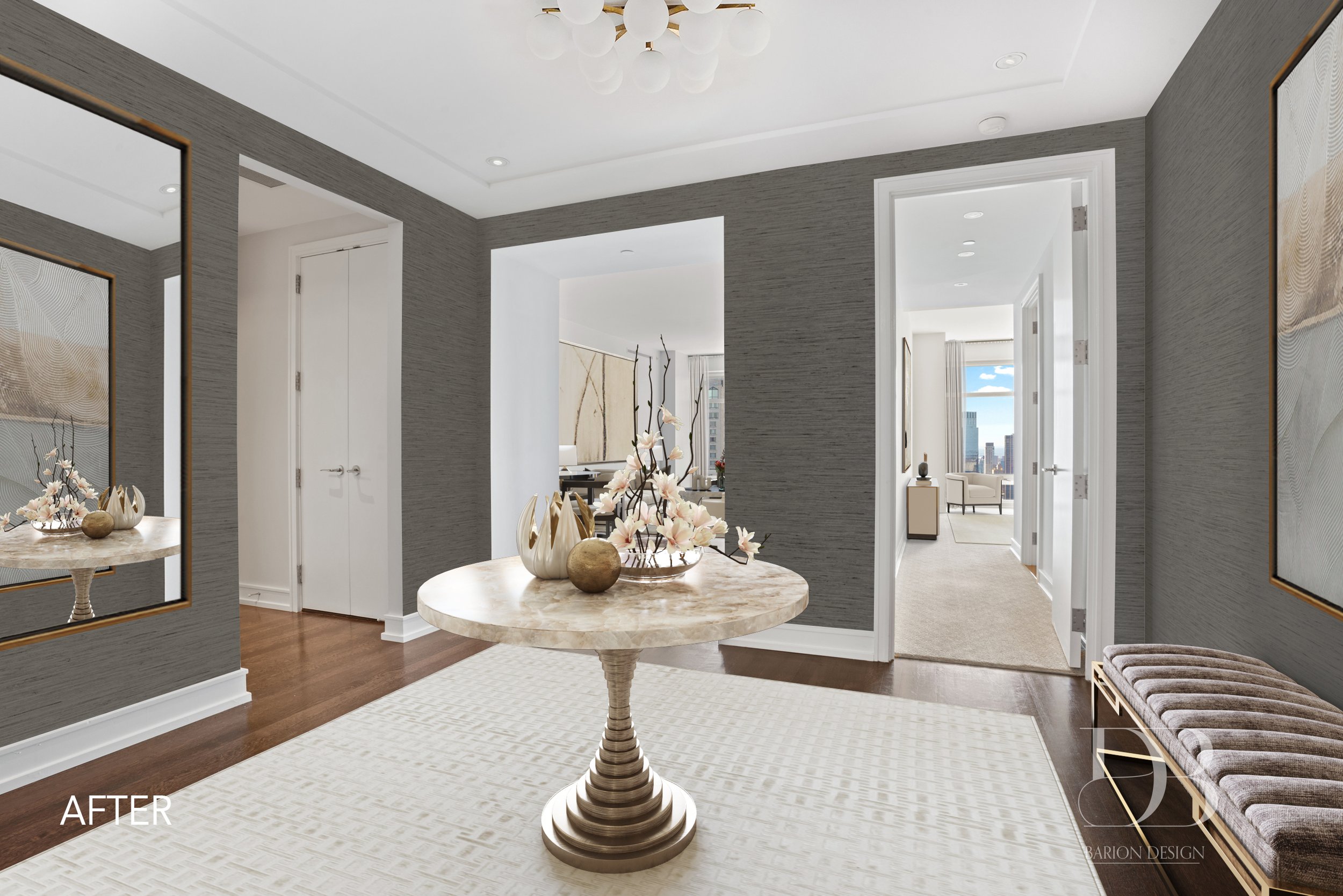Home Staging : Wall Color Do’s and Don’t’s
Color is a powerful thing as people react to color on an emotional level. Often, they associate specific colors with events, places or feelings experienced in a particular moment – experiences that can be felt again when in the presence of such colors.
These feelings can be heightened when a particular color is more pure, and more easily described or articulated. For example, orange is an easily articulated color, versus neutral colors such as tan, khaki, or charcoal gray.
Although all colors occur in nature, colors that are typically associated with nature tend to be more neutral, and more what I call “non-colors.” Colors that fall into this category tend to be off- whites, warm grays, tans, stone colors, earthy greens, wheat tones, mochas, etc. These colors can be light, medium, or dark in value, while the hues tend more toward "earthy" in tone.
For effective home staging, it’s best to stick with neutral tones or "non-colors."
Remember, you are trying to make your home appeal to as many potential buyers as possible, and the use of neutral colors will appeal to more people than the use of easily identifiable colors, which can bring up strong emotions and not necessarily positive.
How should architectural elements and dimensions be handled by the seller when it comes to color?
If a residential interior has classically structured architecture, the use of paint color is easier. Classically structured rooms have three basic elements: Ceilings, Trim and Walls. Streamlining color use typically employs the use of an overall ceiling color, an overall trim color, and an overall wall color throughout a residence. You can introduce differentiation from room to room by using variations on a color theme for the walls while keeping the same ceiling and trim colors throughout for continuity in an overall design theme.
If a residence has more complicated architecture, such as in an urban loft space, the definitions on color use can become more complicated. Exposed beams, columns, and soffits inherent in the load-bearing structure of a space can create problematic decisions about where to start and stop the use of different paint colors, particularly in spaces where one room runs into another without clear and obvious separations, such as walls, doors, etc. Varying ceiling heights, narrow hallways and smaller, windowless spaces can also be seen as unsalvageable by many sellers. Such spaces should, however, be viewed as opportunities to turn negatives into positives – and often with surprisingly attractive results. These are areas where color, for instance, can be used to amplify and reconfigure the visually interpreted dimensions of a space.
Darker colors tend to recede, while light and bright (pure or pure-saturated) colors advance, so if you want to make a small space seem larger, resist the temptation of painting every surface bright white.
Conventional wisdom would tell us that bright white should be the best choice to make a small space seem the largest, however, try using a darker color on a ceiling where the ceiling height is low, instead. The right darker color can seem to make a low ceiling disappear into infinity. Through this same principle, darker colors on opposing walls can make them recede into the distance.
Another dimensional trick is to paint the walls and ceiling of a small room (or a room with low ceilings) the same color, thus taking away the defining junctures where the wall plane meets the ceiling plane. For more on making a room look larger, check out 7 Ways to Make a Room Look More Spacious When Staging a Home.
What are the best paint finishes to use for different rooms, and how much impact can they have?
There are three main points to consider when determining which paint finishes to use for a staging project: durability, labor, and cost.
Durability – Selecting a latex-based paint that has an eggshell or pearl sheen finish will provide the opportunity to clean smudges, fingerprints, etc. that may get on the painted surfaces during the selling process. These sheen levels are adequate for walls, ceilings, and trim in any room, including kitchens and bathrooms, because of their durability and low reflective quality. This versatility also will save time, labor, and product costs for your staging budget, where more "effect" is desirable than actual monetary outlay. However, if time and budget allows, I feel the best latex finishes should be as follows: A flat paint for general ceiling use in non water- supplied rooms, eggshell finish for walls, and a satin finish for trim. In water-supplied rooms such as kitchens, bathrooms or laundry rooms, a satin finish for walls, ceilings, and trim works best for longer-term durability and resistance to moisture.
Labor – When making decisions about which paint colors to use that will present your residence in the best possible light to potential buyers, the more extensive the color palette, the more expensive the labor cost will be to achieve your color plan. Every color change means more time expended to apply each paint color. If you have ever tried "edging in" a wall color against a different ceiling color yourself, you know how difficult and time-consuming a process that can be (then add to that the use of another color for trim elements). All of this means that sometimes the use of a general overall color for major rooms of a residence is the smart choice, saving more intricate and unique color use for smaller, transitional areas – like an entry foyer or hallway. In major room areas such as living rooms, dens, and bedrooms, the color for walls, ceiling and trim may be the same, but a difference in sheen will help to delineate the surface changes while showing decorative attention. In this case the "edging in" of one finish to another is easier because the color is the same – and more forgiving if you’re doing it yourself. The eye is less likely to notice irregularities that can result from less than perfect "edging in" because the colors are the same.
Cost – Latex, acrylic or water-borne paints are generally less expensive than oil-based or alkyd-based paint products. If you are an advocate for using greener products, there are many "eco-friendly" paints available from larger manufacturers and boutique paint companies alike. You will want to investigate the prices of any paint products to see what will fit into your home staging budget. Latex paints, meanwhile, allow for the application of multiple coats and allow for the painting of abutting surfaces in shorter periods of time thus reducing your labor costs because less time is wasted waiting for the paint to dry.
How should I decide which rooms to paint what colors?
I touched a bit on color choices when discussing architecture and dimension earlier, but here are some further suggestions on palette selection that might make the task easier as well:
Major rooms can often benefit from the use of a single color choice for ceilings and trim. The same color will unify and make cohesive the overall design in your residence. Varying the wall color within a single color tone theme from room to room is also where you can show a little spirit without going overboard. Remember, you are trying to appeal to many people, so staying in with a neutral color palette will appeal to more potential buyers.
Kitchens and bathrooms generally look better with a fresh coat of white or light neutral-toned, off-white paint colors. You want these rooms to look clean and sparkling.
Entry Foyers, transitional spaces like Hallways or Stair Halls, and smaller rooms can benefit from using deeper colors to alter the perception of space. Using darker colors in the neutral color family can help to enlarge one’s perception of a small space. Because you don’t tend to spend much time in transitional spaces, it’s more acceptable to take more risk in your choice of color depth, saving safer choices for larger rooms that people spend more time living in.
Ultimately, the most important advice I can offer to someone staging their home is to always remember that your paint color choices must appeal to the masses – that pool of potential buyers who will make you an offer – not to your own sensibilities and personal tastes. The goal is to get your home sold. Once the closing papers are signed, the new owner will decorate and paint to fit their specific needs, just as you will do in your new residence.
When staging to sell, should sellers hire a professional stager, or try to do the work themselves?
You are trying to sell your property, for the highest possible price, and you should want to show it in the best possible light. Hiring a professional home staging company, or a virtual staging company, will help to present your property to potential buyers at its best. It is also essential for home staging to appeal to a wide variety of people. Potential buyers should be able to envision themselves in the space, without using too much imagination. Working with a professional can ensure the right design for the right buyers.



